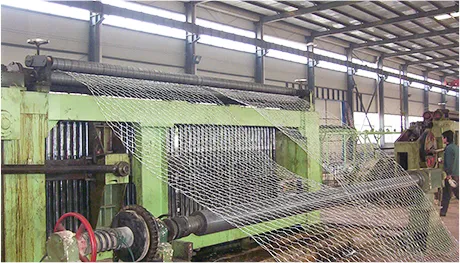-
 Phone:
Phone: -
 Email:
Email:

rockfall netting
Rockfall Netting A Comprehensive Approach to Slope Stability
Rockfalls pose significant threats to infrastructure, human life, and the environment. These natural events are primarily triggered by factors such as weathering, seismic activity, and human-induced disturbances. In order to mitigate the risks associated with rockfall, engineers and environmental scientists have developed various stabilization methods, one of which is rockfall netting. This article delves into the importance of rockfall netting, its design considerations, installation processes, and benefits.
Understanding Rockfall
Rockfalls occur when fragments of rock break loose from steep slopes or cliffs and fall due to gravity. They can occur in various settings, including mountainous regions, roadways, and construction sites. The consequences of rockfalls can be severe, leading to road closures, property damage, injury, or even fatalities. As such, effective mitigation strategies are crucial for ensuring safety and preserving the integrity of structures and landscapes.
What is Rockfall Netting?
Rockfall netting is a protective measure designed to catch and contain falling rocks before they can reach vulnerable areas. By intercepting loose rocks and preventing them from gaining momentum, netting systems contribute to reducing the impact of rockfall events. These systems are made from high-tensile steel wire or synthetic materials and are strategically installed across slopes and cliffs where rockfalls are likely to occur.
Design Considerations
The design of rockfall netting systems involves several key considerations
1. Site Assessment A thorough evaluation of the slope is essential. Engineers assess the geology, topography, and weather patterns to determine the rockfall hazard level.
2. Netting Specifications The material, size, and configuration of the netting must be chosen based on the size and velocity of potential rockfall debris. Specifications typically depend on factors such as the expected rockfall energy and the angle of the slope.
3. Anchoring and Support Systems Proper anchoring methods are critical for ensuring the effectiveness and durability of the netting. Engineers must select appropriate anchor types and spacing based on soil conditions, load factors, and environmental impacts.
4. Maintenance and Inspection Regular maintenance is vital to ensure the longevity of the netting systems. Inspections are carried out periodically to identify any damage caused by weather, vegetation growth, or animal activity.
Installation Process
rockfall netting

The installation of rockfall netting involves several steps
1. Site Preparation Clearing and preparing the slope is the first step. This may involve removing loose debris and vegetation that could interfere with the installation.
2. Anchoring The netting system needs to be anchored securely to the slope. This is done by drilling into the rock or soil and installing anchors that will hold the net in place.
3. Netting Deployment The net is carefully stretched across the slope and secured at the anchors. Ensuring the net is taut is crucial for its effectiveness.
4. Final Adjustments Once the netting is in place, engineers perform final checks and adjustments to ensure that it meets safety and performance standards.
Benefits of Rockfall Netting
The implementation of rockfall netting offers numerous benefits
- Safety By preventing rockfalls from reaching roadways and populated areas, netting systems significantly enhance public safety.
- Cost-Effectiveness While the initial installation may entail costs, the long-term savings from avoiding damages and accidents can be substantial.
- Minimal Environmental Impact Unlike heavy barriers or concrete walls, netting systems are less obtrusive and can blend with the natural landscape, preserving ecological balance.
- Versatility Rockfall netting can be deployed in various terrains and settings, making it a flexible option for many geotechnical challenges.
Conclusion
Rockfall netting stands as a reliable and effective solution for managing the risks associated with rockfalls. By combining careful planning, precise engineering, and ongoing maintenance, these systems play a crucial role in protecting lives and property from the unpredictable nature of rockfalls. As communities continue to face geological challenges, the importance of innovative solutions like rockfall netting cannot be overstated. Through these protective measures, we take vital steps toward enhancing safety and resilience in our environment.
-
Wire Mesh for Every Need: A Practical SolutionNewsJul.25,2025
-
Steel Fences: Durable, Secure, and Stylish OptionsNewsJul.25,2025
-
Roll Top Fencing: A Smart Solution for Safety and SecurityNewsJul.25,2025
-
Cattle Farm Fencing Solutions for Maximum SecurityNewsJul.25,2025
-
Affordable Iron Binding Wire SolutionsNewsJul.25,2025
-
Affordable Galvanized Wire SolutionsNewsJul.25,2025
-
Wire Hanger Recycling IdeasNewsJul.25,2025








